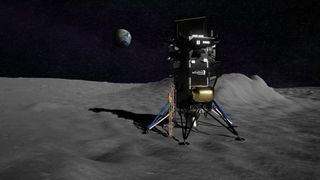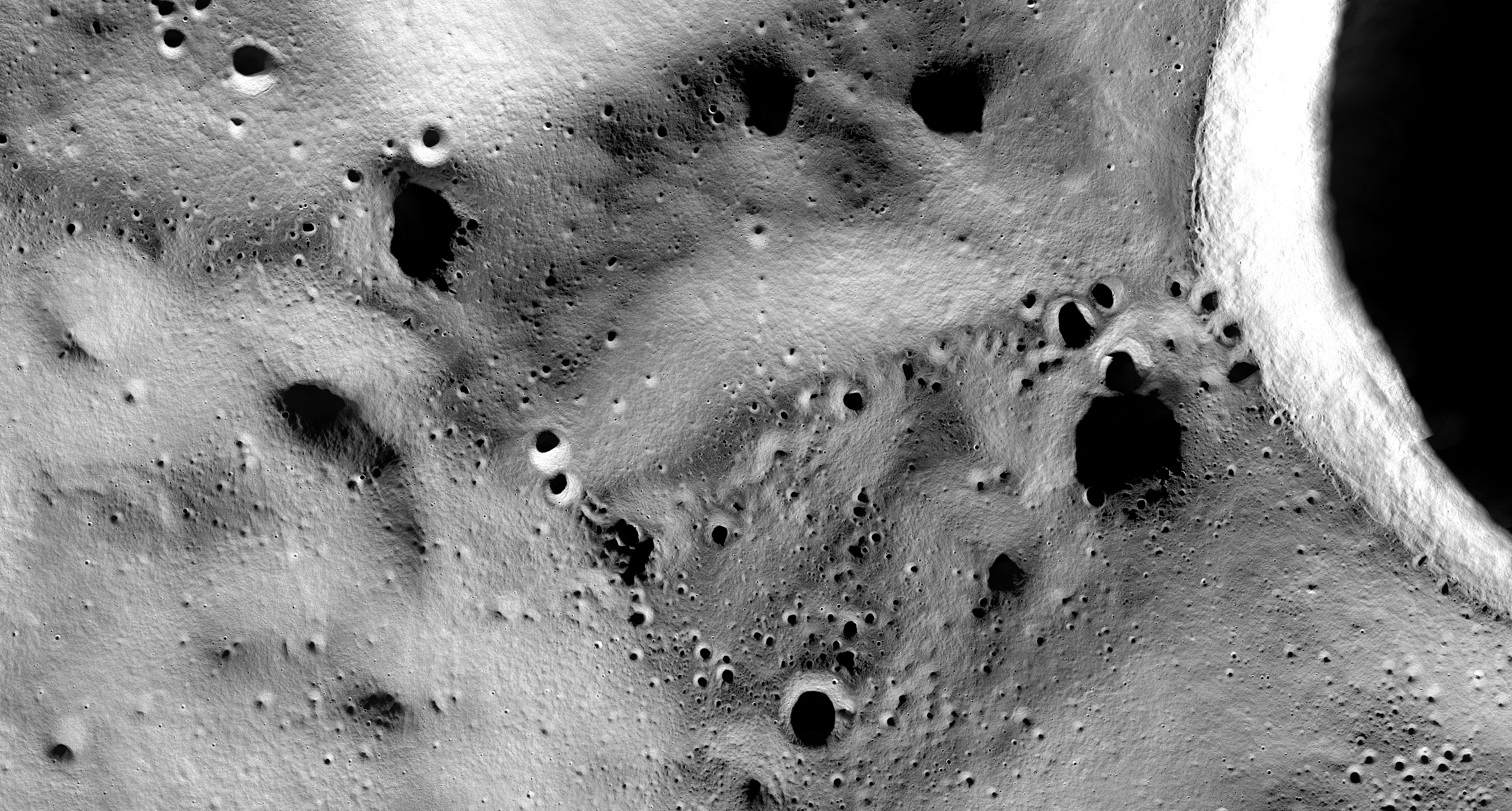NASA’s Prime-1 ice-driller will ride an Intuitive Machines Nova-C lander to the moon.

An illustration of the private Nova-C moon lander built by Intuitive Machines with NASA’s Polar Resources Ice-Mining Experiment-1 (PRIME-1) attached to the spacecraft. (Image credit: Intuitive Machines)
NASA has set its sights on the moon’s south pole in its quest for ice.
This week, the space agency and the company Intuitive Machines announced Shackleton Crater landing site at the south pole of the moon for a small lander set to launch next year. The location is called the “Shackleton connecting ridge” and NASA data hint at ice lurking below the surface, the agency said in a statement(opens in new tab) on Nov. 3.
The robotic mission includes NASA’s Polar Resources Ice-Mining Experiment-1 (PRIME-1) that requires solar power and a view of Earth for communications. The ridge zone should provide both, NASA said.
When you purchase through links on our site, we may earn an affiliate commission. Here’s how it works.

- Home
- News
- Space.com
NASA picks landing site at the moon’s south pole for ice-drilling robotBy Elizabeth Howell published November 08, 2021
NASA’s Prime-1 ice-driller will ride an Intuitive Machines Nova-C lander to the moon.
- (opens in new tab)
- (opens in new tab)
- (opens in new tab)
- (opens in new tab)
- (opens in new tab)

NASA has set its sights on the moon’s south pole in its quest for ice.
This week, the space agency and the company Intuitive Machines announced Shackleton Crater landing site at the south pole of the moon for a small lander set to launch next year. The location is called the “Shackleton connecting ridge” and NASA data hint at ice lurking below the surface, the agency said in a statement(opens in new tab) on Nov. 3.
The robotic mission includes NASA’s Polar Resources Ice-Mining Experiment-1 (PRIME-1) that requires solar power and a view of Earth for communications. The ridge zone should provide both, NASA said.
Sponsored LinksDubai Villa Prices Might Surprise YouDubai Villas | Search Ads
“Finding a landing location where we might discover ice within three feet of the surface was challenging,” Jackie Quinn, PRIME-1 project manager at NASA’s Kennedy Space Center in Florida, said in the statement.
“While there is plenty of sunlight to power the payloads, the surface gets too warm to sustain ice within reach of the PRIME-1 drill. We needed to find a ‘goldilocks’ site that gets just enough sunlight to meet mission requirements, while also being a safe place to land with good Earth communications.”

This data visualization image from NASA shows the area of a ridge near the lunar south pole’s Shackleton Crater (seen at far right). NASA has picked this spot to land its ice-drilling Prime-1 experiment on Intuitive Machine’s Nova-C lander in 2022. (Image credit: NASA)
NASA frames the PRIME-1 mission as a key step in learning how to mine resources from the lunar surface. The agency plans to land a series of longer human missions on the moon, known as Artemis, later in the 2020s. But to make such an effort sustainable, NASA argues, scientists and engineers need to practice in-situ resource utilization (ISRU), which is the practice of using resources in the local environment.
PRIME-1 aims to deploy a drill, called The Regolith Ice Drill for Exploring New Terrain (TRIDENT), which will attempt to burrow as deep as 3 feet (almost 1 meter) underneath the surface. The experiment also hosts a mass spectrometer that will measure gases TRIDENT may uncover from volatiles, which are elements and compounds that easily transform from gas to liquid to solid.
NASA plans to use the “lessons learned” from PRIME-1 to prepare for a more ambitious lunar rover mission, the Volatiles Investigating Polar Exploration Rover (VIPER), which will also land at the south pole in 2023. In September, the agency announced VIPER’s landing site would be just west of Nobile, a crater near the moon’s south pole.
The Intuitive Machines lander, known as Nova-C, will host other technology demonstration experiments. For example, Nokia will test a “space-hardened” 4G and LTE network to attempt high-speed networking on the surface, while an Intuitive Machines rover-hopper called Micro-Nova will try to pick up pictures and science data inside a nearby crater.
Intuitive Machines, along with Astrobotic and Orbit Beyond, were selected in May 2019 for NASA’s Commercial Lunar Payload Services (CLPS) initiative. CLPS aims to test science experiments and technology demonstrations on the moon through private companies. Selection for CLPS places companies in a pool of qualified applicants, from which NASA may draw for future missions.
NASA next announced in October 2020 that it would pay Intuitive Machines up to $47 million to deliver PRIME-1 to the surface, and then in August this year, Intuitive Machines said it would task a SpaceX Falcon 9 rocket with launching the lander to space and aiming it towards the moon.








